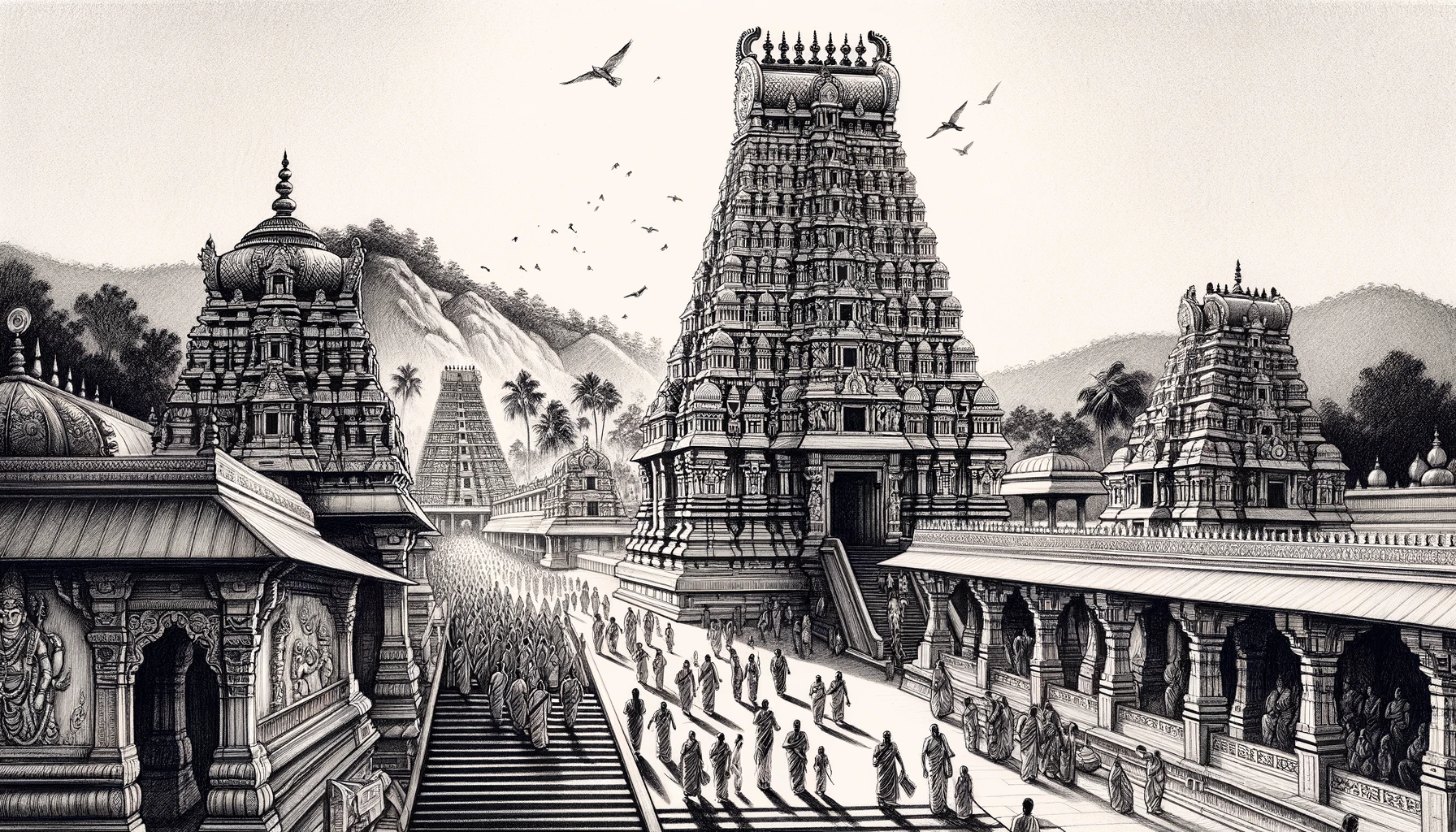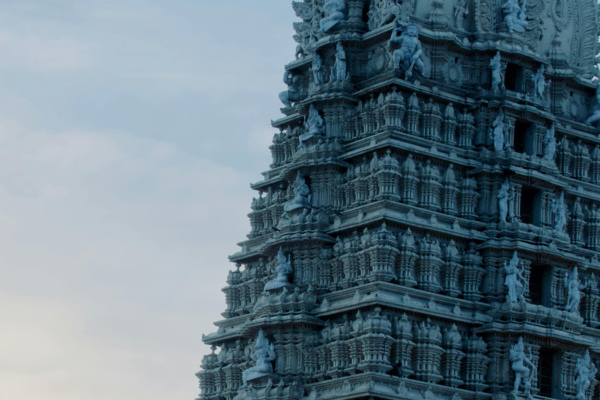In the verdant landscapes of South India, the Dravidian architectural style stands as a testament to the region’s rich cultural and spiritual legacy. Characterized by its monumental structures, intricate artistry, and symbolic motifs, Dravidian architecture has captivated the imagination of devotees, historians, and art lovers alike. This blog post delves into the origins, characteristics, and magnificent examples of Dravidian temple architecture, unraveling the stories etched in stone.
Dravidian Architecture: An Overview
Origins and Evolution
Dravidian architecture traces its roots to the early dynasties of South India, particularly the Pallavas, Cholas, Pandyas, and Vijayanagara empires, which played pivotal roles in its development from the 6th century onwards. This style is predominantly found in Tamil Nadu, Karnataka, Kerala, and Andhra Pradesh, regions rich in natural resources that facilitated the construction of these architectural marvels.
Defining Characteristics
The quintessence of Dravidian architecture is observed in its:
- Vimanas: Pyramidal towers constructed over the sanctum sanctorum, intricately adorned with sculptures and carvings depicting gods, goddesses, and mythological scenes.
- Gopurams: Towering gateway structures that are often more elaborately decorated than the main temple tower, serving as the entrance to the temple complex.
- Mandapas: Pillared halls used for gatherings and rituals, each showcasing exquisite craftsmanship.
- Compound Walls: Enclosing the entire temple complex, these walls often feature smaller shrines and are adorned with decorative elements.
Masterpieces of Dravidian Architecture
Brihadeeswarar Temple, Thanjavur
Dedicated to Lord Shiva, the Brihadeeswarar Temple, also known as the Big Temple, is a UNESCO World Heritage Site and a marvel of Dravidian architecture. Commissioned by Rajaraja Chola I in the 11th century, this temple is famed for its massive vimana, which stands at over 60 meters, making it one of the tallest of its kind. The temple’s walls are replete with detailed bas-reliefs and frescoes that narrate tales from Hindu mythology, showcasing the artistic and engineering prowess of the Chola dynasty.
Meenakshi Amman Temple, Madurai
The Meenakshi Amman Temple, situated in the heart of Madurai, is an epitome of Dravidian architecture and a focal point of Tamil culture and religion. The temple is dedicated to Goddess Parvati (Meenakshi) and Lord Shiva (Sundareshwar). It is renowned for its twelve gopurams, each intricately carved and painted, depicting an array of divine figures and mythological scenes. The temple’s architecture is a vibrant expression of devotion, with the Hall of Thousand Pillars (Aayiram Kaal Mandapam) as a highlight, featuring sculptures that showcase the Dravidian style’s sophistication.
The Artistic and Cultural Significance
Dravidian temples are not merely places of worship; they are cultural hubs that have played significant roles in the preservation and propagation of South Indian arts, literature, and religious practices. The architecture of these temples reflects the socio-political milieu of their times, serving as enduring symbols of the dynasties that built them. The grandeur of Dravidian temples also underscores the advanced state of engineering and craftsmanship achieved by ancient Indian architects and artisans.
Preserving the Legacy
Today, Dravidian temples continue to be centers of religious life and cultural festivals, drawing devotees and tourists from around the world. The preservation of these ancient structures is crucial for future generations to appreciate and learn from India’s rich architectural heritage. Efforts by government bodies, local communities, and international organizations ensure that these temples remain a living testament to the spiritual and artistic achievements of ancient India.
Conclusion
The Dravidian architectural style, with its grandiose structures and profound symbolism, offers a window into the rich tapestry of South Indian culture and spirituality. As we explore these ancient temples, we are reminded of the timeless quest for the divine and the unparalleled beauty that human devotion can manifest. The Brihadeeswarar Temple and Meenakshi Amman Temple are just two examples of the myriad architectural wonders that await discovery, each with its own story to tell.
This post, focusing on Dravidian architecture, is the second in a series exploring the diverse styles of ancient Hindu temples. Future posts will delve into Nagara, Vesara, and Kalinga architectures, continuing our journey through the architectural splendor of India’s sacred spaces. Stay tuned for more insights into the marvels of Hindu temple architecture.

